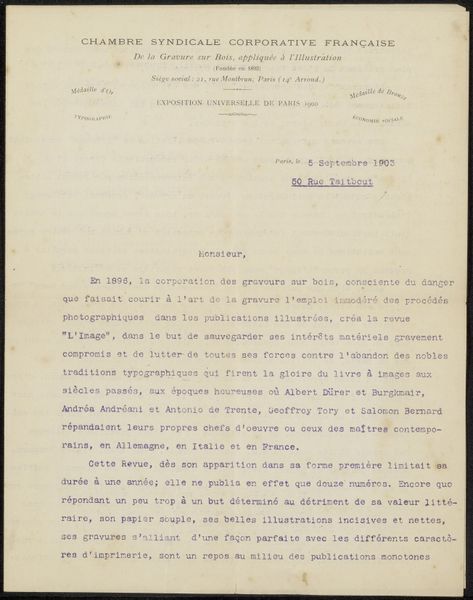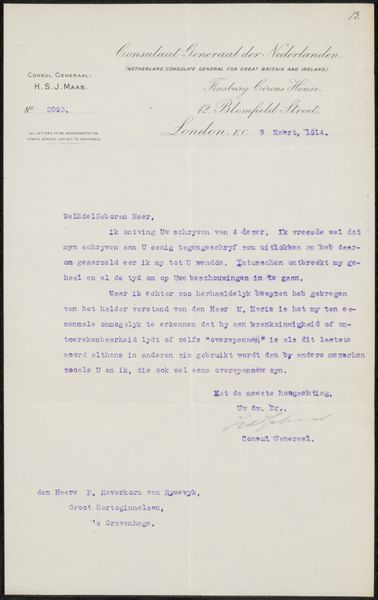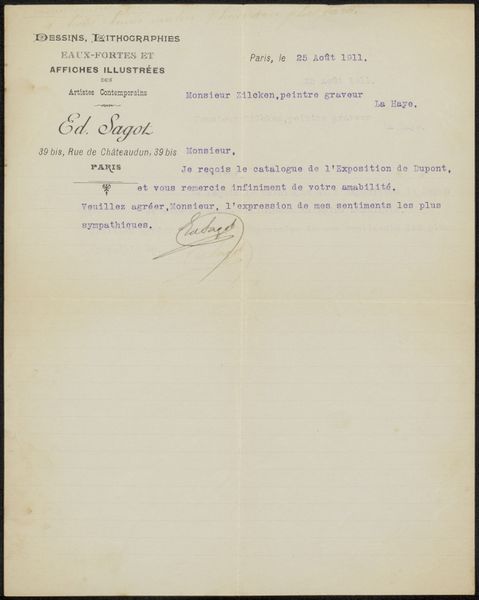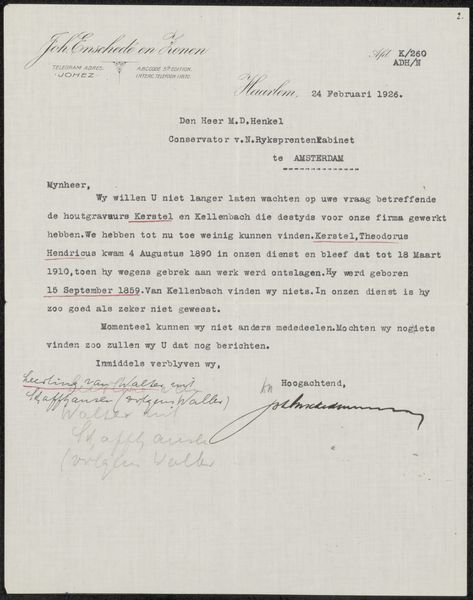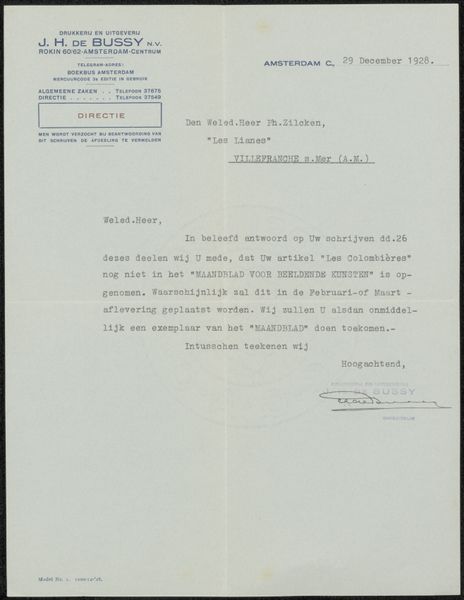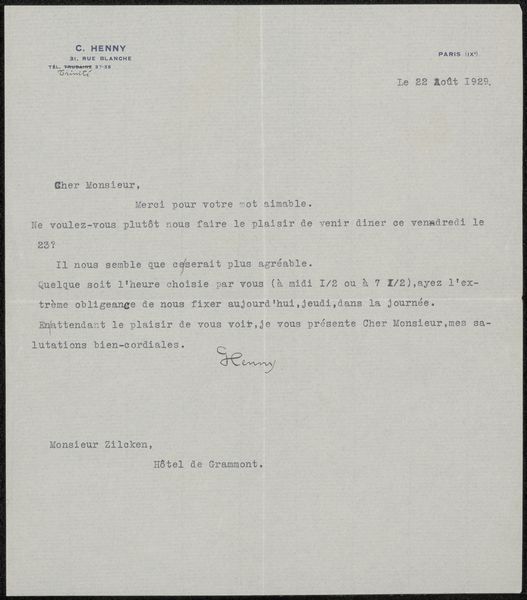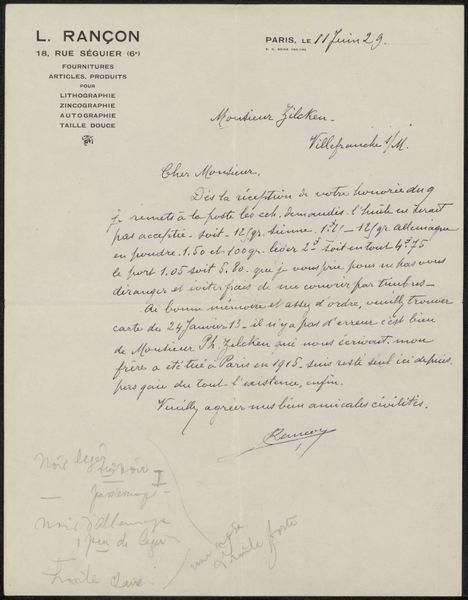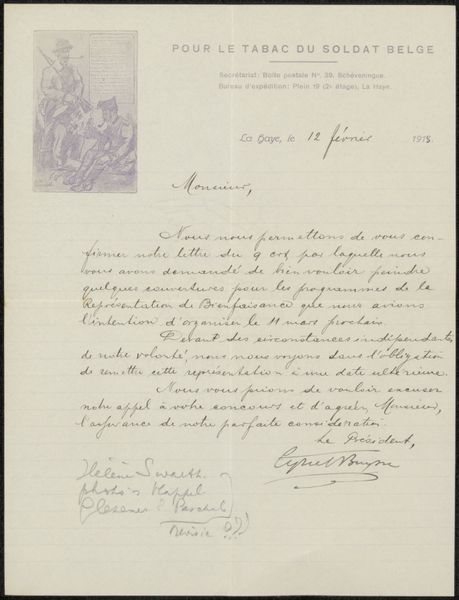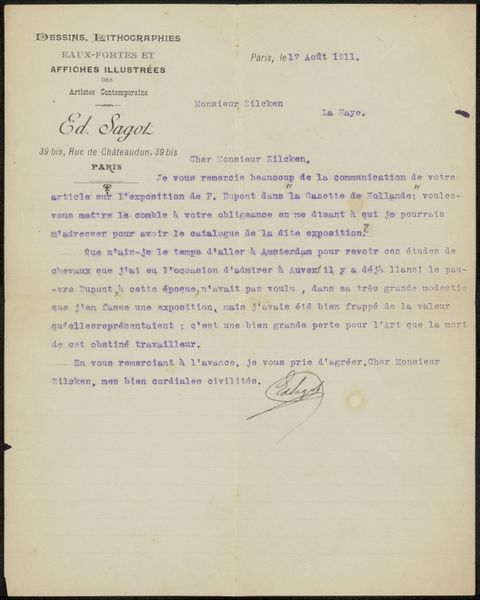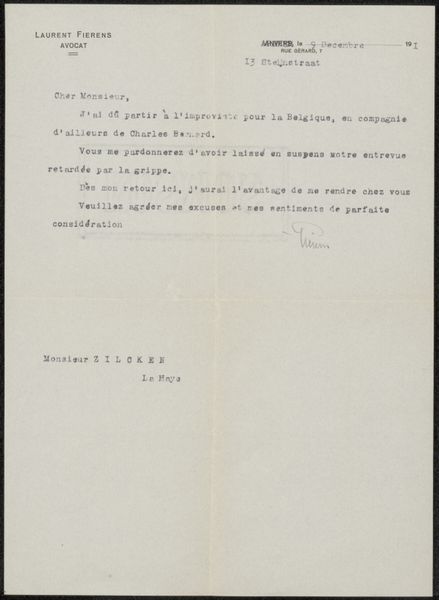
Brief aan Philip Zilcken Possibly 1903 - 1917
0:00
0:00
drawing, print, paper, typography
#
drawing
# print
#
paper
#
typography
Copyright: Rijks Museum: Open Domain
Curator: We are looking at “Brief aan Philip Zilcken,” dating probably from 1903 to 1917, consisting of a print and drawing on paper. The text includes typography and what appears to be a signature. Editor: The muted colors and formal lettering give it a feel of restrained formality, something institutional and perhaps a bit austere. It gives an initial impression of administrative weight and subtle cultural significance. Curator: The letter is from the Chambre Syndicale Corporative Française De la Gravure sur Bois, relating to their publication "Image." In essence, it acknowledges and expresses gratitude to Monsieur Zilcken for agreeing to provide patronage. Within the French societal structure of the early 20th century, art patronage played a vital role, often dictated by hierarchies and systems of prestige. This letter embodies the codified and structured nature of the period’s artistic endorsement. Editor: Notice how the text, seemingly straightforward, also projects subtle hierarchical symbolism. The careful choice of typography and placement of "Monsieur" denote a respectful distance but also subtly acknowledge Zilcken's status within their social circle. Curator: Exactly. Understanding the power dynamics embedded within artistic patronage allows us to reflect on the artist's agency during this period. These endorsements held great meaning for movements of the time, influencing visibility and acceptance. How did such a gesture then inform contemporary notions of support, celebrity, and marketing in art? Editor: Well, looking deeper at this piece, it brings up the role of the "Comité" or committee as cultural gatekeepers. The committee and Monsieur Zilcken become powerful symbols themselves, representing both the centralized authority over taste and aesthetic values of early 20th-century French artistic institutions. How was this sense of authority translated in art circles over time? Curator: Perhaps, it would have shifted to individual critics, but it also evolved into different forms of group consensus, like the rise of collective studios and politically oriented workshops later in the century. Considering this letter through the lenses of post-structuralist discourse allows us to unpick hidden power relations influencing aesthetic value and canon-formation in the context of gender and class inequality in arts. Editor: Indeed. It is a letter about support that ultimately leaves us to consider notions of historical visibility and artistic valuation. Curator: Precisely. A glimpse into a world shaped by social and financial dynamics that continue to echo in our modern creative landscape.
Comments
No comments
Be the first to comment and join the conversation on the ultimate creative platform.
